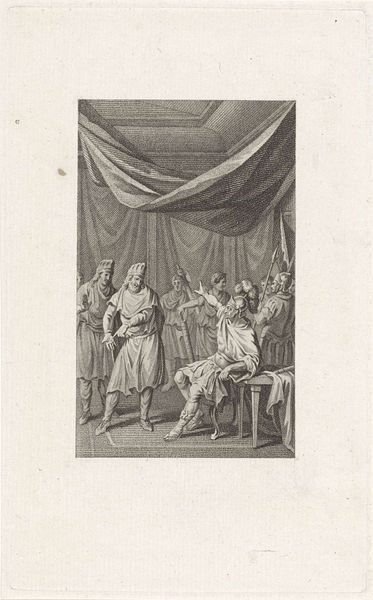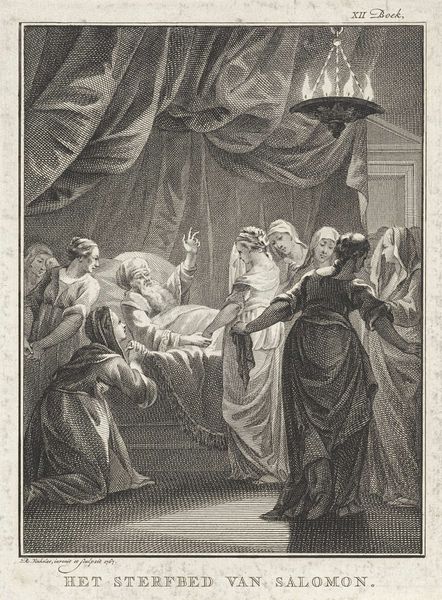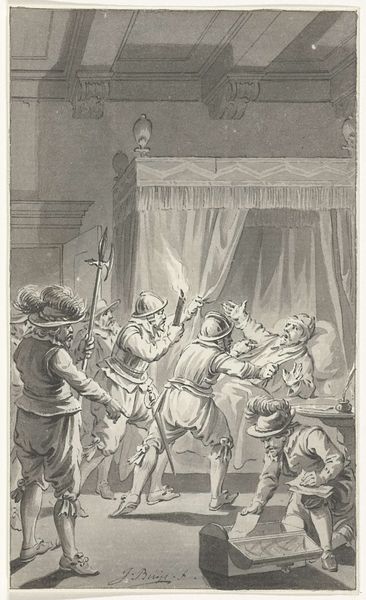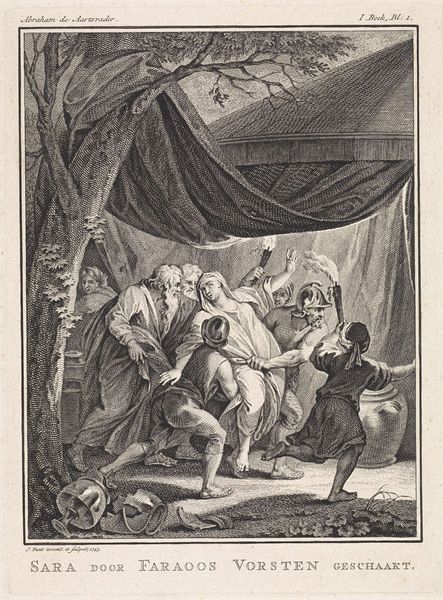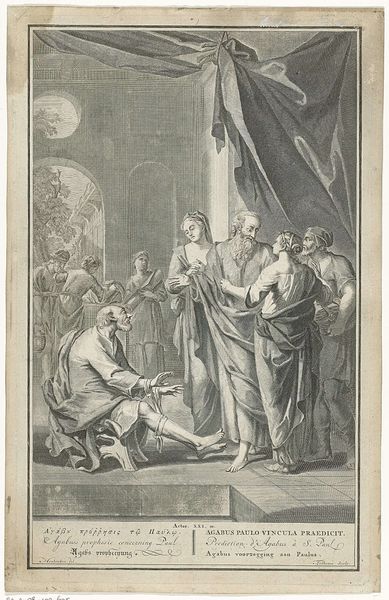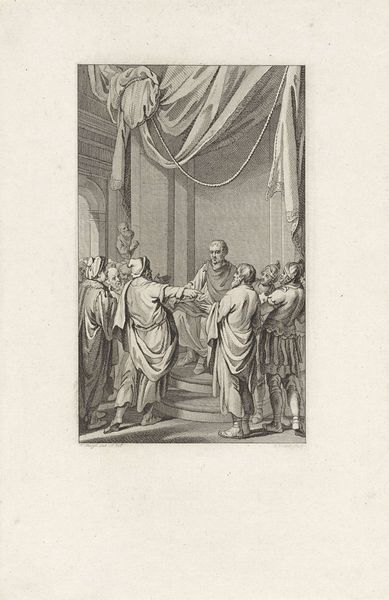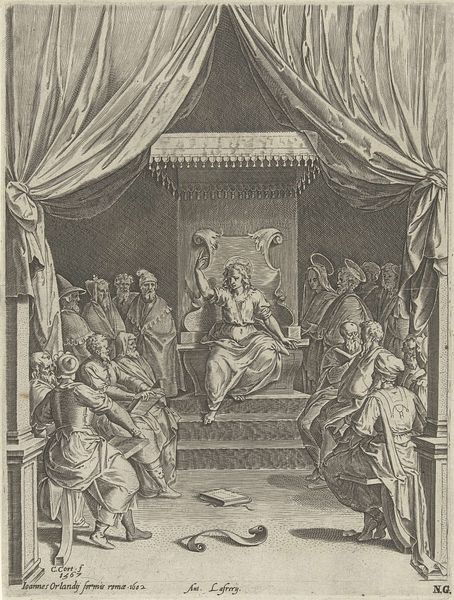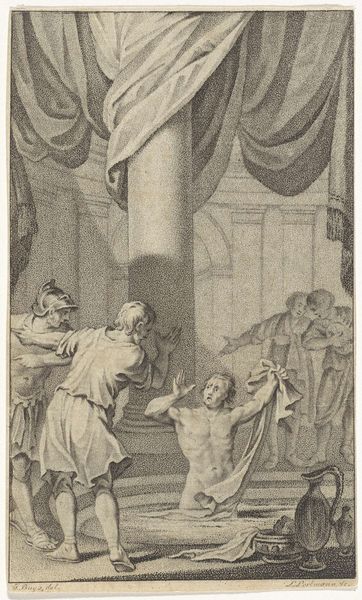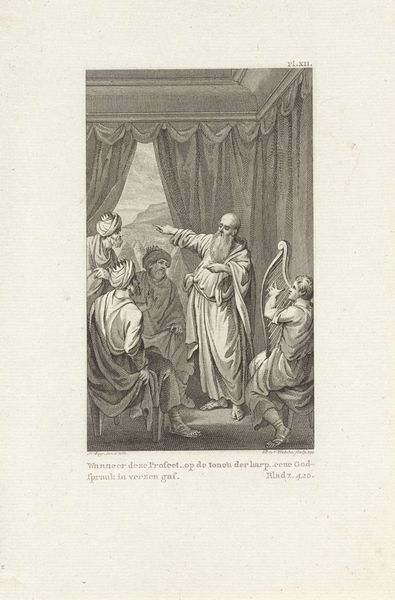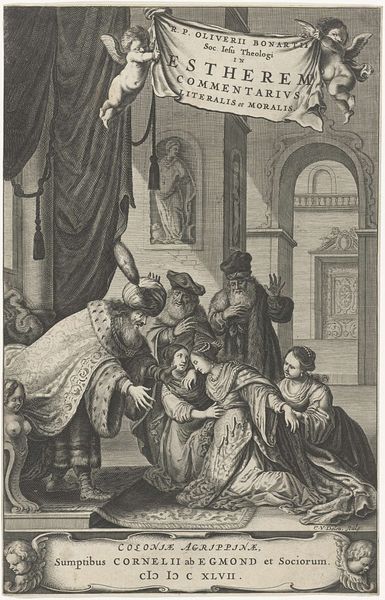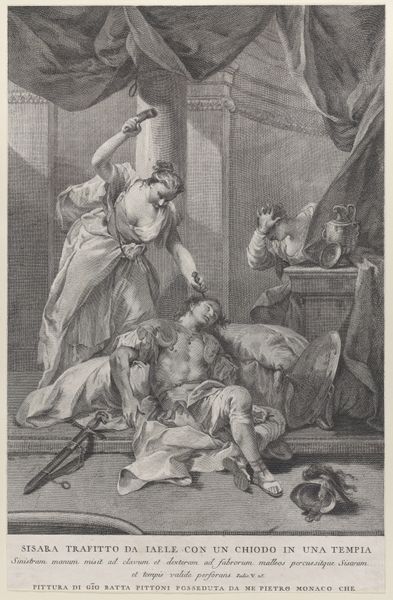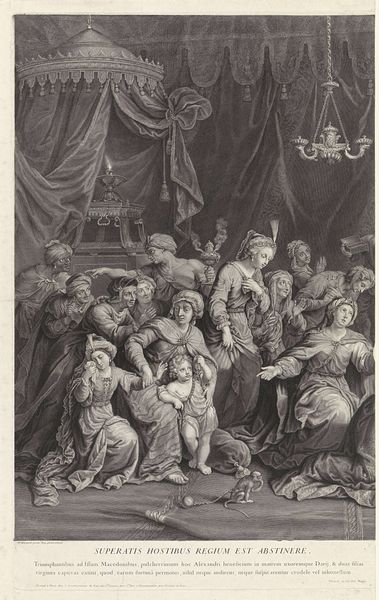
Marcus Licinius Crassus uitgelachen door Parthische afgezanten 1800
0:00
0:00
ludwiggottliebportman
Rijksmuseum
engraving
#
neoclacissism
#
toned paper
#
light pencil work
#
mechanical pen drawing
#
pen sketch
#
pencil sketch
#
figuration
#
personal sketchbook
#
pen-ink sketch
#
line
#
sketchbook drawing
#
pencil work
#
history-painting
#
academic-art
#
engraving
#
pencil art
Dimensions: height 135 mm, width 82 mm
Copyright: Rijks Museum: Open Domain
Editor: This is "Marcus Licinius Crassus Mocked by Parthian Envoys," an engraving from 1800 by Ludwig Gottlieb Portman. It feels rather theatrical, doesn’t it? Like a scene frozen mid-performance, full of gestures and drama. I am particularly drawn to Crassus in the foreground sitting precariously on his stool! What strikes you about it? Curator: Oh, you picked up on the theatrical element perfectly! To me, this piece is dripping with the self-conscious drama that Neoclassicism just adored. But let's consider *why* they found this scene, Crassus's humiliation, so captivating. It's history, yes, but it's also a morality tale. This scene depicts more than just the ridicule of a Roman general by Parthian envoys; it illustrates hubris meeting its inevitable, and rather embarrassing, downfall. Do you see how Portman uses line work? The details, how would you describe them? Editor: Yes! There's a lot of detailed line work to give form to everyone, even though there's almost no shading... which also makes it feel sort of removed from reality. The clean lines feel almost clinical and precise! But you said something about hubris? Curator: Exactly. The clarity mirrors the artist's attempt to create an 'objective' view, though of course, it’s anything but. Hubris, in Crassus’s case, was thinking he could just waltz into Parthia and conquer it. But he didn’t account for… well, anything, really! And the Parthians? They knew how to play the power game. In this engraving, you sense that knowledge in their mocking gestures and assured posture. Editor: So it's a warning wrapped in a visually appealing package! A little lesson cleverly disguised. I never thought about the artist imposing such a feeling into his art. Curator: Exactly. A potent reminder, delivered with impeccable Neoclassical composure. It's a blend of historical narrative and a critique of power, etched into an engaging tableau. It reminds us that art, even when seemingly objective, is always a reflection of its time and, even more profoundly, the artist.
Comments
No comments
Be the first to comment and join the conversation on the ultimate creative platform.
